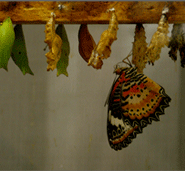Mythological Art and the Creation of Sacred Narratives
As a child, I was told stories such "lying down and eating will make your food go into the donkey's stomach" or "if you swallow a watermelon seed, a watermelon tree will grow inside you". There I was, sitting upright, imagining a miniature donkey drool in hunger.
Those were small, personal myths, that rationality and adulthood had me tuck away somewhere, perhaps in my donkey's stomach.
There were larger myths that evaporate into superstition but are never quite dissipated: painting white footsteps on the eve of Diwali in mortal hope of a visit from the Goddess Laxmi, that beer is good for your hair, that walking under a ladder is unlucky.
There are collective myths that we cannot quite separate from experienced reality: That the earth was created with a big bang, the smallest particle is a neutron, for every action there is an equal and opposite reaction, relativity, uncertainty.
And finally, there are the myths that epic tales and religions create, the kind in which characters are given magical universes to dabble in, abounding with fairies, gnomes, gods, goddesses, Gaia, Icarus, Athena, Hanuman, The Bible, centaurs, and regular people with too many consistencies.
We try and make sense of how things work with science, and for the rest, we create myths.
This issue—in a nightsuit, on a giant bird—flies over personal and universal worlds.
Baaraan ijlal paints complex layers of fantastical worlds, mystical, humorous secrets from a secret life as a fictional creature of play and revelry.
Tanya Mehta talks about letting the conscious give way for the subconscious, and the importance of the mythical, the imaginative and the revision of old mythical tales in understanding the modern condition.
In an entirely fictional story, Waylon D’Mello weaves an involved tale set in the epic Mahabharat, around Tejal Shah’s photographs of a gender transformation.
And finally, Anirudh Karnick makes a (minima)List to guide the reader into the rhythmic, ritualistic, masked world of Koodiyattam performance.
What is true and what is not: to me, it doesn't matter. We live in multiple realities and each of these stories stretches our imaginations to embrace the unknown, as one more form of the known.
Wishing you a slow read,
Himali.
Editor's Note.
Every sunbeam, every strain of music, every sapling and starfish is ultimately the regeneration of a previous something, a collection of somethings, taking on new shape. At the most indivisible level we can comprehend, all life is nothing more than atoms and molecules dancing their way through various forms. And if everything comes from something, it stands to reason that everything must go to something as well.
Read More
Illusion: Seeing Beyond Seeing
Meaning: In Search of Significance.
Melody: A Different Tune
Rhythm: Ordering Time


